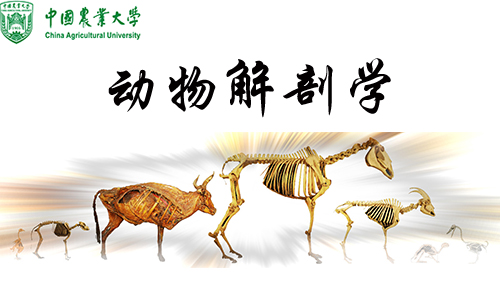
当前课程知识点:Culture and Tourism > Week 1: Cultural Tourism: Definitions and Concepts > 1.1 Introduction course outline and UNESCO World Heritage Program > 1.1.1 Introduction of culture and tourism course outline
返回《Culture and Tourism》慕课在线视频课程列表
返回《Culture and Tourism》慕课在线视频列表
大家好,我叫张柔然。
我很荣幸给大家分享文化旅游两个章节的课程内容。
我将讨论遗产管理和遗产旅游,
并将通过几个非常有趣的话题和案例研究进行阐述。
好的,让我们来讨论一下,什么是文化旅游?
文化一直是旅游的主要组成部分,
从16世纪开始的贵族旅行发展就证明了这一点。
在20世纪,一些人声称,
文化被认为是旅游的目的,旅游现在是文化。
文化景点在各个层次的旅游中都扮演着重要的角色,
从世界文化的全球亮点到巩固当地特色的景点。
理查德认为,文化、遗产和艺术
一直是吸引游客的重要因素。
然而,近年来,“文化”作为一种重要的营销工具被重新发现,
以吸引那些对遗产和艺术有特殊兴趣的游客。
那么什么是文化旅游呢?
那么什么是文化旅游呢?罗宾森和史密斯定义的文化旅游
探索如何将文化动员起来供游客
观赏和理解尤其是在特定的环境下。
文化旅游是最古老的旅游形式之一,
在世界大部分地区仍然是旅游业的支柱。
根据经济合作与发展组织(OECD, 2009)的数据,
大约40% 的国际旅游总量中,
文化旅游在2007年达到了3.6亿人次。
尽管这些“受文化驱动的游客”与其他游客往往难以区分,
因为他们的度假动机越来越复杂,
他们对目的地的需求特别强调
高质量旅游和高价值体验。
那么,什么是文化遗产旅游呢?
文化遗产旅游是文化旅游的一个分支,
以旅游发生地的文化遗产为导向的活动。
美国国家历史保护信托基金
遗产旅游定义为“旅游体验的场所
和活动真正代表过去的故事和人” ,
文化遗产旅游的定义是“旅游体验和活动的地方,
真正代表过去和现在的故事和人。”
因此,文化遗产旅游的重要性是多方面的;
它有积极的经济和社会影响,
它建立和加强身份,它有助于保护文化遗产,
文化作为一种工具,它促进人们之间的和谐和理解,
它支持文化和帮助更新旅游业。
因此,文化遗产旅游有许多目标
必须在可持续发展的背景下实现
如文化资源的保护,
对资源的准确解释,真实的游客体验,
以及刺激文化资源的收入。
因此,我们可以看到,
文化遗产旅游不仅关心识别、
管理和保护的传统价值观,
但也必须参与了解旅游的影响,
尤其是对社区和地区的影响,实现经济效益和社会效益,
为保护提供财政资源,以及营销和推广。
因此,这是文化旅游的主要概念,也是文化遗产旅游。
我会讲一下这门课的结构。
第一章由我来讲解。
我们首先介绍文化旅游和课程大纲,
我已经介绍过了,现在也正在介绍。
其次,我将介绍什么是联合国教科文组织世界遗产计划,
并确定文化遗产和自然遗产的意义。
还有几个重要的问题。
第二章主要阐述文化景观的含义
文化根源、产业遗产、非物质遗产、
交通遗产、系列遗产。
我还会讲到联合国教科文组织
正在进行的世界遗产和可持续旅游项目其他专家也会讲到这些问题。
第三章,Steve Brown博士主讲。
他主要讲了澳大利亚的遗产体系
以及如何管理和保护世界遗产。
他会给出一些关于澳大利亚遗产的例子介绍,
介绍澳大利亚的遗产系统
关于悉尼歌剧院的案例研究,
乡村景观遗产,还有蒙古阿尔泰的案例研究,
它链接到正在进行的项目由联合国教科文组织ICOMOS
和世界自然保护联盟,和文化与自然的旅程。
第四章由Ken Taylor教授讲解,
他来自澳大利亚国立大学
他将讨论文化景观的含义,
他将介绍景观的意义,
景观的价值,阅读,景观识别和评估。
因此,景观分析和评估也会给出一个特别的案例研究。
第五章将由Fergus来讲授。
第五章的Fergus Maclaren先生
是ICOMOS文化旅游科学委员会主席.
他将首先介绍土著旅游背景,
然后介绍文化遗产和土著人,
然后介绍加拿大土著世界遗产的旅游问题,
并提供几个案例研究和结论。
第六章将由劳拉简·史密斯教授主讲。
她将谈论遗产旅游中的事实和情感
拉·简·史密斯教授,是一位主任
任职于澳大利亚国立大学博物馆和遗产中心。
她的主要关注点是两个概念。
首先,是关于遗产的访问与案例研究在澳大利亚,英国和美国,
然后他会谈论遗产是一个表演,
连接到关键的遗产研究。
这第六章是本课程的主要内容。
希望大家喜欢。
-1.1 Introduction course outline and UNESCO World Heritage Program
--1.1.1 Introduction of culture and tourism course outline
--1.1.2 Introduction of UNESCO World Heritage Program(1)
--1.1.3 Introduction of UNESCO World Heritage Program(2)
-1.2 Cultural Heritage-1
--1.2.1 The meaning of culture heritage
--1.2.2 Criterion(i): masterpiece of human creative genius
--1.2.3 Criterion(ii): exhibit important interchange of human value
--1.2.4 Criterion(iii): bear a unique or at least exceptional testimony
--How can the public understand the importance of heritage?
-1.3 Cultural Heritage-2
--1.3.1 Criterion(iv): an outstanding example in human history
--1.3.2 Criterion(v): represent a culture or human interaction with environment
--1.3.3 Criterion(vi): associated with living traditions of outstanding universal significance
-1.4 Natural Heritage
--1.4.1 Natural heritage features, formations and criterions
--1.4.2 Cases studies of natural heritage
--Cultural landscape meanings: The case of West Lake, Hangzhou, China
--How to access heritage of your hometown?
-2.1 Mixed Culture and Natural Heritage
--2.1.1 Mixed heritage operational guidelines and cases (1)
--2.1.2 Mixed heritage operational guidelines and cases (2)
--2.1.3 Mixed heritage operational guidelines and cases(3)
-2.2 Authenticity, Integrity and Cultural Routes
--2.2.1 How to determine authenticity and integrity
--2.2.2 Heritage routes and heritage canals (1)
--2.2.3 Heritage routes and heritage canals (2)
--What do you think about cultural heritage categories?
-2.3 Special Heritage and Sustainable
--2.3.1 Physical remains of the history of technology and industry
--2.3.2 Transboundary Heritage, Serial Heritage, Serial/Transnational Heritage
--2.3.3 Intangible cultural heritage
--2.3.4 UNESCO World Heritage and Sustainable Tourism Programme
--Recovering the Memory of Ourselves for the Sustainable Cites
--Week 2 quiz
--What do you think about cultural heritage categories?
-3.1 The Australia’s Heritage System and Sydney Opera House
--3.1.1 The Australian Heritage System
--3.1.2 Case Study: The Sydney Opera House
-3.2 Role of the ISCCL and Cultural Landscape (1)
--3.2.2 Uluru-Kata Tjuta National Park
--3.2.3 Honghe Hani Rice Terraces
-3.3 Role of the ISCCL and Cultural Landscape (2)
--3.3.1 West Lake cultural landscape (1)
--3.3.2 West Lake cultural landscape (2)
-3.4 Rural Landscapes as Heritage
--3.4.1 ISCCL Principles Concerning Rural Landscapes as Heritage
-3.5 Case Study: Mongolian Altai
--3.5.1 Nature Culture Integration & the Mongolian Altai(1)
--3.5.2 Nature Culture Integration & the Mongolian Altai(2)
--Week 3 quiz
--Discussion: What do you think is the role of ISCCL?
-4.1 Introduction of the Meaning of 'landscape’
--4.1.1 Brief introduction of landscape and culture
--4.1.2 The conceptual framework of cultural landscape
-4.2 Landscape Values
--4.2.1 The word “landscape” itself and differences in Western, Eastern
--4.2.2 Cultural significance for heritage source
--Discussion: What do you think the cultural landscape attracts you?
-4.3 Reading the Landscape: Identification and Assessment
--4.3.1 Planning model for heritage conservation management policy
--4.3.2 Cultural landscape resources evaluation steps
--Article: Cultural mapping: Intangible values and engaging with communities with some reference to As
-4.4 Case Study: Wingecarribee Historic Landscape
--4.4.1 Case study:Wingecarribee historic landscape study(1)
--4.4.2 Case study:Wingecarribee historic landscape study(2)
--Week 4 quiz
--Discussion: What should we do to strengthen the protection of cultural landscape?
-5.1 Indigenous Tourism
--5.1.1 Indigenous tourism background
--5.1.2 World heritage and indigenous peoples
--5.1.3 Tourism issues at Canadian indigenous world heritage sites
--Discussion: What challenges indigenous World Heritage faces?
--Article: State conceptions of indigenous tourism in Chile
-5.2 Case Study and Conclusion: Great Expectations for Tourism
--5.2.1 Case study Pimachiowin Aki
--5.2.2 Conclusions:Great Expectations for Tourism
--Disussion: Do you have any experience of indigenous tourism?
--Week 5 quiz
-6.1 The Definition of Heritage in Heritage Performance Study
--6.1.1 The definition of heritage in heritage performance study
--6.1.2 Heritage performance and meaning making
--6.1.3 Two key issues emerging from qualitative study
-6.2 Heritage Performance - Evidence from Australia, England and USA
--6.2.1 Heritage performance - reinforcement
--6.2.2 Heritage Performance - inter-generational communication and social values
--6.2.3 Heritage performance - recognition and respect
--6.2.4 Heritage performance - education
--Article:Theorizing museum and heritage visiting
-6.3 The Conclusion of Heritage Performance
--6.3 The conclusion of heritage performance
--Week 6 quiz
--Discussion: What kinds of heritage performances have you learned in this week?


